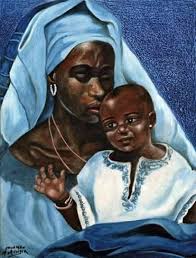









When is Navratri 2022? Start date of the Hindu festival, meaning behind it and fasting rules explained
Hindus around the world are preparing for Navratri, a festival celebrated every autumn.
It usually falls between September and October and lasts for nine days, with the word Navratri translating to “nine nights”.
Here is everything you need to know about it.
What is Navratri?
Navratri is one of the most important and widely-celebrated festivals in India, with devotees to the Goddess Durga honouring her nine forms over the nine days.
During this period, devotees observe a fast, perform a worship ritual called puja and celebrate the nine displays of Durga’s feminine power to the world.
Each day is marked with a different colour and worshippers dress in the colours which correspond to each day.
People also wear their best traditional attires to attend dandiya – a traditional dance – nights all over the world.
When is Navratri 2022?
This year, Navratri starts on Monday 26 September and ends after Tuesday 4 October.
Here are the colours associated with each day:
- 26 September – white
- 27 September – red
- 28 September – royal blue
- 29 September – yellow
- 30 September – green
- 1 October – grey
- 2 October – orange
- 3 October – peacock green
- 4 October – pinkHow is it celebrated?
Special images of Durga commemorating her victory over the buffalo-headed demon Mahishasura are worshipped daily, and on the 10th day (Dussehra) they are taken in jubilant processions to nearby rivers or reservoirs for immersion in water.
In addition to family observances, the puja, or ritual, days are also celebrated with public concerts, recitations, plays, and fairs.
Dussehra is observed differently across the world, significantly in various parts of subcontinent India, with the celebrations having been featured in Unesco’s “Intangible Cultural Heritage of Humanity”.
In northern and western India, where the day is predominantly spent honouring Lord Rama, the celebrations centre significantly around Ramleela – a theatrical re-enactment of his life.
Hundreds of plays involving drama, dancing and music are performed in outdoor festivities to families and friends, with huge effigies of Ravana later set alight to signify the destruction of evil.
Those in southern and eastern parts of the country mainly dedicate the day to goddess Durga, and host processions by the waterfront.
Clay statues are ceremonially carried to a river or ocean while music and prayers are chanted, before being immersed in the water. The statues dissolve once immersed, signifying the return of Durga to other gods.
Some mark the festival by observing fast for the entire nine days, others keep the fast for the first two or last two days of Navratri.
Most people do not consume non-vegetarian food or alcohol. Onion and garlic are also avoided.
Reference: Alex Finnis -

